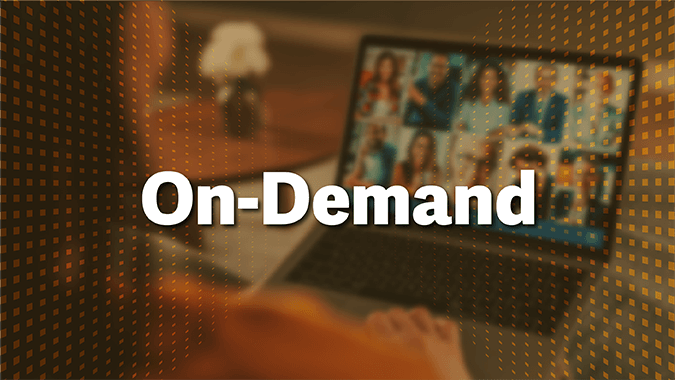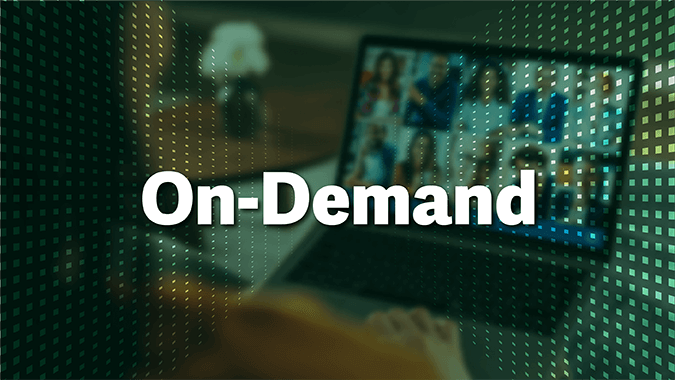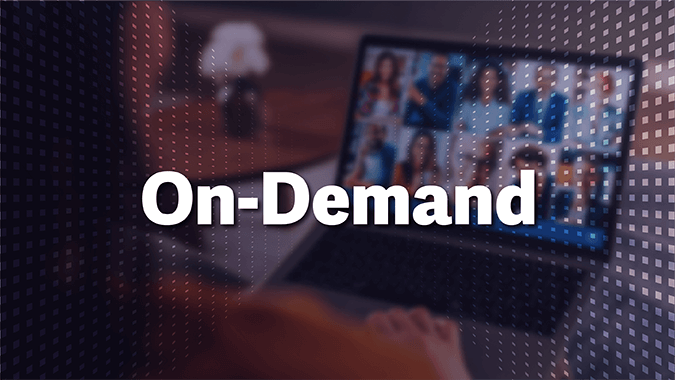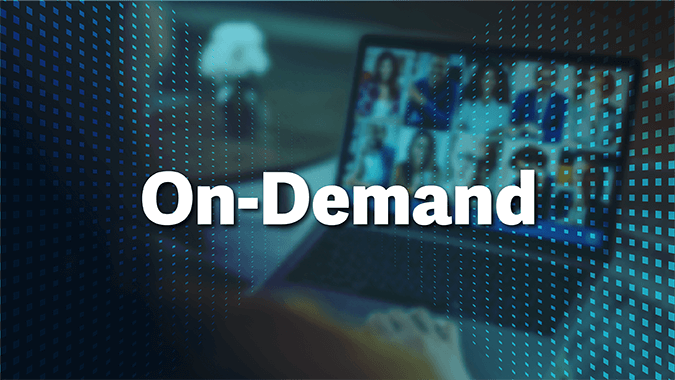
A Deep Dive of LinkedIn: Creating a Framework for a Positive Digital Impression
- Published
- May 5, 2020
- Topics
- Share
EisnerAmper team and personal branding expert Alyssa Gelbard provide a deep dive into designing an impactful LinkedIn profile and making a positive digital first impression. Alyssa provides an in depth look into each section of a LinkedIn profile including what sections need to be completed and what a well thought out profile should say about its owner.
Transcript
EisnerAmper Team: Hello and welcome to the Friends of the Firm podcast. We hope to provide you with creative, effective solutions for finding the career opportunities or executive staffing solutions you're looking for. I'm your host and our special guest today is Alyssa Gelbard, founder and president Of Point Road Group and personal branding and career expert. Today we will be discussing how to create an impactful LinkedIn profile. Alyssa, thank you so much for joining us.
Alyssa Gelbard: Glad to be here and thanks for having me, NPh. I always have a great time with EisnerAmper folks.
NP: Awesome. For our members who may have missed it, Alyssa joined us earlier this year in our New York City office to discuss with our attendees how to optimize their profiles and utilize LinkedIn as a vital tool. It was a huge success, so Alyssa kindly obliged to share an abridged version of that presentation today with us and we're looking forward to it.
NP:I use LinkedIn all the time. We like each other's content and we comment on it often and I appreciate that. I think I have a fairly good handle on how everything works and where everything is and basic functionalities of the site and things of that nature. But for our members who are listening who may not be as familiar, could you give us a brief overview of LinkedIn?
AG: Sure thing. So to start with, I mean it's huge. There's more than 660 million people in more than 200 countries. And by the way, those numbers are from LinkedIn and they're about four months old. So there's definitely a lot more than that. And just taking a step back and thinking about the platform overall, when you look at it, you can access it on a desktop or on mobile. And there's actually still a difference. Even though Microsoft bought them a while back, there's still pretty decent difference between when you access it on desktop and mobile. So just kind of be cognizant of that. I really love mobile for viewing profiles, reading content, and maybe quick content engagement. But for those of you who are looking to really optimize your profile and strengthen it, I think that looking on the desktop is easier. And doing it on a desktop is easier because it's a lot less easy to make a mistake. And you see more and you can see more information on the desktop too.
And then there's free and premium versions. There is over time LinkedIn has put things behind the paywall because hey, they need to make money, too. And we'll talk about some of those differences, but there are ... there's basic, there's business, there's job seeker, there's sales navigator. Having a strong profile is really important because you make better impressions with it, for people you know, and people you don't know, it enhances your credibility and certainly your personal brand, which is something we live and breathe every day at Point Road Group. It’s your visibility to target audiences. So that includes search by potential employers or clients depending on what you do and what you're looking to do.
Having a strong profile drives your network growth. And also better connection before and after meetings. People are looking everybody ... and meetings and interviews. People are looking you up and you are looking people up before and after. So having a strong profile, it gives you, you're making a better impression that way. And not just having basic content on your profile is what makes it strong. It's also having something rich with more information that goes beyond just, "Okay, here's who I am in a plain vanilla way."
NP:Alyssa, great summary. So in order for our members to have strong profiles and really get the most out of the platform, what should their profiles look like? I know you touched on this, but what should their profiles say about them and how much of their profile do they really need to complete? Some of the members I've spoken to, they're like, "Should I have my resume attached to my profile?" And I'm like, "Please don't do that." So I want to know from your perspective, what are some of the pitfalls and what are some of the recommendations from you?
AG: Sure. This is where we kind of roll up our sleeves and get into it a little bit. So an optimum profile should not be plain vanilla. You want to show your expertise and your unique value and use some personality to stand out. And this takes time. One thing to really think about here is that as you optimize a profile, it's not like you go in, you do it, one and done. It's something you do over time. You shouldn't try and do everything at once because it can be overwhelming. Do one section at a time. But really think about how you're presenting yourself because what your profile is, and also by the way, how your resume is too, but it should be geared towards where you're looking to go in your career, whether it's internal within your company, when you're looking for a job, etcetera.
If you're looking to enhance what you do, perhaps you're looking for board seats too, that you want to present the information with an eye towards where you're going, not who you were. Who you were builds everything, you're giving your history, you're presenting that. LinkedIn makes it certainly easy to do that, but you want to do it in a more vibrant way. And also use rich content whenever you can. And what I mean by that is photos, presentations, links to a podcast like this, video. Things like that where people can see more about you. But let's talk about what does that mean in terms of what are some of those key sections to complete.
So first off, headshot, got to have one. LinkedIn provides a lot of statistics about why. And here are just a few, just to give you a sense of flavor. You'll get 21 times more views with a headshot, 36 times more likely to get messages. People are nine times more likely to connect with you. And there's some more things too. But the bottom line is you got to have one. But it shouldn't be just a picture. It should be a current picture of you, what you look like today, not 10 years ago. It should be professional looking. It doesn't have to be taken by a professional, although that can be optimal. But really think about your background, what you're wearing, the image that you're portraying when someone sees you for the first time. And I mean I can talk about headshots for an entire podcast about how critical they are, but really know that it's important to pay attention to it. And if you're not sure if your headshot is good, ask people. People will give you honest feedback.
Having industry selected so you don't actually see the industry. You can select it in your profile when you're editing it, but it's not outward facing. So like NPh, if I looked at your profile, I'm not going to see an industry. But you want to select one because according to LinkedIn you're nine times more likely to get views by even selecting one. Although to be honest, the options are sometimes really clear for some people and not so clear for others. The list hasn't been updated in a long time. But definitely pick one.
Now for the super critical. Headline, got to have one. And it should not be just your title and company. It should go beyond that and give a quick sense of expertise or specialty so someone can get an idea who you are. Often titles don't actually reflect what you do.
If you say you're a director, well that could be of anything. So give a little bit more of a sense. If you have an industry specialty or subspecialty within what you do, especially you know you're in finance and accounting, talk about what you do there, what your specialty is. Is it transformation? Do you have global experience? Are you an ERP specialist? M&A, things like that where you might have certain specialties throughout and how you want to be known, also. That's really critical.
Then you move on to the about, the summary section. And this is also another really important place because this is where you get to briefly tell your story and give people an overview of who you are and provide, I like to call it meat. A little bit of meat to who you are. And it should not be in third person like a bio. This is not other people talking about you, it's you talking about you. So first person is great, objective voice, which is like the resume language. That's okay, too. Sometimes people aren't comfortable writing in first person, that's totally fine but that certainly is optimal because you can really show personality there.
But again, here's where you want to get in more detail about your expertise. And again, whether it's industry, your specialty, if you have other things to like board experience, technical skills if they're relevant, if you have global experience and there's certain things that you need to highlight. But this is where you get to tell your story. And really think about the beginning of it too, the first few lines because that's what people see first before they click view more. So if you're starting with day one of your career and you don't get to the really good stuff until the end, people aren't going to see that if they don't click on view more. So make sure you have your biggest bang for your buck in the beginning. And by the way, same with your headline because that gets truncated in some places. So the early part of your headline should really pack the biggest punch.
Then you get down to experience. Really important to have some detail. Don't just list title and company and dates because according to LinkedIn, again, you'll get a lot more messages and profile views, 10 times more messages if you have some detail, eight times more profile views, five times more connection requests. People want to get at least a quick sense of what you do. So you don't have to list everything. Certainly you don't need to copy everything from your resume, but you do want to give people a sense of what you do, especially in your current and most recent roles more than anything. But so they can understand who you are and what you do.
Another important section, education. Make sure you include if you have a graduate degree. Both. We often see people do that where they just list their graduate degree, not undergrad. And it's important to list undergrad because it enables connection. There's the power of your undergrad alumni network, which is really strong for most people. And especially when you're looking to network. And especially now more than anything.
Skills and endorsements, also a really important section. If you include at least five, 17 times more profile views. And you can include up to 50 and really think about, especially for those of you who are looking for jobs or even considering a job search, think about what skills are relevant to the jobs you're seeking. And obviously you have to make sure you have them to include them, but make sure you're including a variety of them, not just a few.
I like and this is the last critical section, volunteer experience because that shows dimension to who you are and whether you have volunteer experience in a professional association, alumni association, nonprofit, cultural institutions, things like that. People like to see that. It enables connection. But the sections that I mentioned are really the most critical because those also impact how you display in search results. If you don't have those completed, that will impact your visibility. So definitely include those. And lastly, make sure you customize your profile URL. So when you create your profile, whenever you did, LinkedIn assigned you a bunch of letters and numbers after your name. You can go in and edit that and you should and make it just your name. Or if you have a common name you can add a middle initial or number two after. But make sure you make it easy, especially if you include your profile in your email signature. Or it also makes it easy when people are making email introductions.
NP: Absolutely. Wow. I don't even know where to start commenting. But I'll choose one quickly. I couldn't agree more with you Alyssa, with regard to the headline. So my headline is master connector. And a lot of people are like, "Did you give yourself that name?" And I'm like, "No, no, no, I'm serious. I've been called the master connected by many." And then I just adopted it. And I probably had master connector in my profile before I was at EisnerAmper, I had my own company, I had it back then. I was a master connector and we're master connectors back then. And then I just said, "You know what, I can still be a master connector within a professional services firm."
So I've kept it and it makes me stick out among other things. And people have also adopted it as well when they say, "He's our master connector, reach out to him, connect with him." So, that definitely works. And I appreciate that. But I want to say this was amazing, Alyssa. Thank you again for joining us.
AG: Oh, it was my pleasure, NPh.
NP:Thank you for listening to the Friends of the Firm podcast, part of the EisnerAmper podcast series. Check back for part two where we will discuss best practices for LinkedIn users. Visit eisneramper.com for more information on this and a host of other topics. And join us for our next EisnerAmper podcast when we get down to business. Thank you.
Also Available On
Contact EisnerAmper
If you have any questions, we'd like to hear from you.
Receive the latest business insights, analysis, and perspectives from EisnerAmper professionals.




